Jess Kamens, a professional photographer in Rochester, is driving through a residential neighborhood to her next session — a home where a family has agreed to sit on the porch to have their portrait taken.
When she arrives, she parks on the opposite side of the street and exits her car carrying a camera with a long lens. From her vantage point 30 feet or more away, she might call out to her subjects to squeeze together. But generally, she offers no specific direction on how to pose or what to wear. After two or three minutes of snapping away, Kamens is off to the next house.
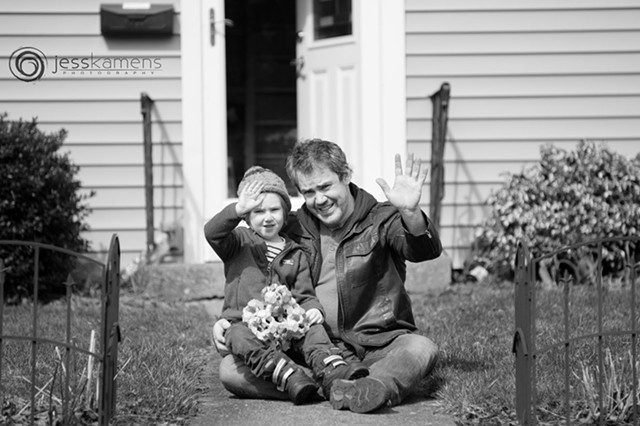 “When I’m standing in front of them, photographing them, there’s this thing between us saying, ‘I know how you feel. I’m in the same situation,’” Kamens said. “I’ve come out to my car for a few seconds to hopefully bring you a little bit of joy.”
“When I’m standing in front of them, photographing them, there’s this thing between us saying, ‘I know how you feel. I’m in the same situation,’” Kamens said. “I’ve come out to my car for a few seconds to hopefully bring you a little bit of joy.”
Like so many people whose work has been deemed “non-essential” by the state looking to quell the spread of the novel coronavirus, Kamens has had to improvise to make ends meet.
For her, gone are the days, at least for now, of shooting posed portraits and close-ups in a studio or other closed setting. Weddings are few and far between. The societal impact of the pandemic has not diminished her passion for her craft, but it has changed her approach to it.
Beyond the practical necessity of photographing someone from a safe distance as they appear on their porch, there’s a deeper thematic meaning in her art.
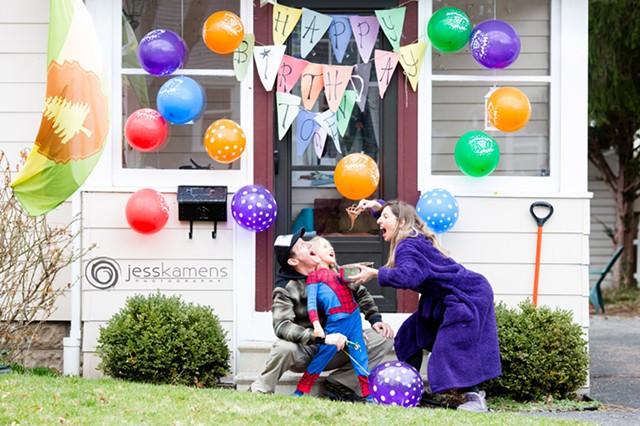 “Their house, your house, my house right now, is something really special,” Kamens says. “It’s just the place where we’re safe, it’s the place where we’re arguing with each other, where we’re playing with each other, where we’re playing music, where we’re meeting with our friends and family on our devices. It’s the place where we’re doing absolutely everything. We’re working, cooking, cleaning, a whole lot more than we ever did, and so it feels sort of iconic. It’s just all of us around the world are at our homes.”
“Their house, your house, my house right now, is something really special,” Kamens says. “It’s just the place where we’re safe, it’s the place where we’re arguing with each other, where we’re playing with each other, where we’re playing music, where we’re meeting with our friends and family on our devices. It’s the place where we’re doing absolutely everything. We’re working, cooking, cleaning, a whole lot more than we ever did, and so it feels sort of iconic. It’s just all of us around the world are at our homes.”
After one such session, Kamens’s daughter Lila said, “Do you know what I see about photography now?”
“What?” her mother asked.
“You make new friends,” she said.
“It was the sweetest perception, and she’s right,” Kamens says. “I feel like I’m connecting with my community like I never have.”
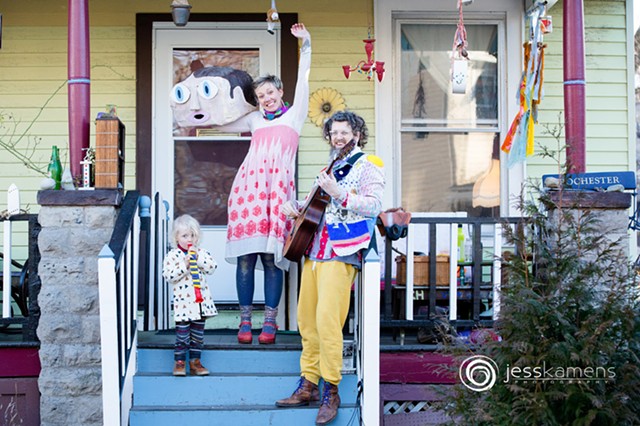 Kamens doesn’t want to take the standard “stand-there-and-smile” photograph. For her, the priority is capturing the true expression of how people are feeling as they self-quarantine at home. Among the people she’s photographed (free of charge) for this project, which she calls “Quarantine Porch Portrait Documentary Series,” the emotions have ranged from enthusiasm about the portrait to a sobering sense of loss in response to the pandemic — whether it has to do with being separated from family members, financial struggles, or other issues.
Kamens doesn’t want to take the standard “stand-there-and-smile” photograph. For her, the priority is capturing the true expression of how people are feeling as they self-quarantine at home. Among the people she’s photographed (free of charge) for this project, which she calls “Quarantine Porch Portrait Documentary Series,” the emotions have ranged from enthusiasm about the portrait to a sobering sense of loss in response to the pandemic — whether it has to do with being separated from family members, financial struggles, or other issues.
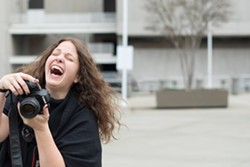 The people photographed sometimes share their feelings with Kamens, either via online message or verbally during the session. She says that our shared experience of social distancing and staying home to prevent the virus’s spread has resulted in a rare, empathetic connection.
The people photographed sometimes share their feelings with Kamens, either via online message or verbally during the session. She says that our shared experience of social distancing and staying home to prevent the virus’s spread has resulted in a rare, empathetic connection.
The importance of preserving these images for future generations — for her grandchildren and great-grandchildren — is not lost on Kamens.
“What do people really wanna see?” she asks. “What will they want to see in 60 years when they look back at this situation, because this is an historic event, big time. And we know we’re living history right now. So what will they want to see? And they’re gonna want to see the faces, and they’re gonna want to feel the feelings of the people.”
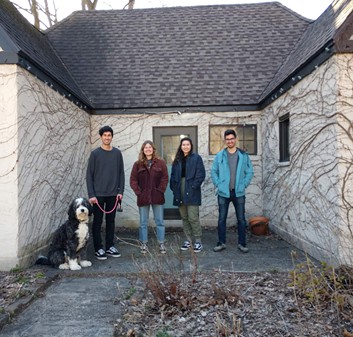 Eli Hackett, an amateur photographer who works full-time for EC4B Engineering in Pittsford, sees 2020 as a “reference point in history.” His motivation for launching his own series of portraits during the pandemic is decidedly more nostalgic.
Eli Hackett, an amateur photographer who works full-time for EC4B Engineering in Pittsford, sees 2020 as a “reference point in history.” His motivation for launching his own series of portraits during the pandemic is decidedly more nostalgic.
“Everybody kinda has this universal experience, just about, of an old film photo of their grandparents, just standing in front of their house,” Hackett says. “It’s nothing fancy, and it’s not very necessarily artistic; it’s not professionally done, usually.”
 In the present moment, Hackett says the photo sessions give participants something to look forward to amid the tedium and uncertainty of having to stay at home. “Right now, people are nervous and they’re scared, and they’re also bored, and they’re lonely,” he says. “And I think this provides an opportunity to change the day up a little bit. It’s something to look forward to, it’s something they schedule.”
In the present moment, Hackett says the photo sessions give participants something to look forward to amid the tedium and uncertainty of having to stay at home. “Right now, people are nervous and they’re scared, and they’re also bored, and they’re lonely,” he says. “And I think this provides an opportunity to change the day up a little bit. It’s something to look forward to, it’s something they schedule.”
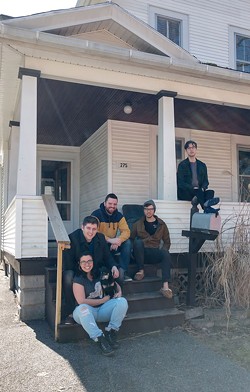 In his photographs, taken using a Canon AE-1 film camera, Hackett creates a modern version of this cultural artifact. Stylistically, the images are matter-of-fact, and the people in them are unheralded. Rather than trying to achieve something polished or artsy, Hackett aims for a natural-looking documentation of who was there at a particular house, at a particular time.
In his photographs, taken using a Canon AE-1 film camera, Hackett creates a modern version of this cultural artifact. Stylistically, the images are matter-of-fact, and the people in them are unheralded. Rather than trying to achieve something polished or artsy, Hackett aims for a natural-looking documentation of who was there at a particular house, at a particular time.
“I think the fact that I’m quite the amateur is actually gonna add to the character of it,” he says, “because like I said, I’m not trying to make it very artistic or doctored or staged.”
The photographs are taken for free and shot from at least 12 feet away. Hackett plans to send the developed portraits back to the subjects, with the date, names, and address written on the back. In the meantime, he shares digital versions of the photographs via Instagram (@eli.a.hackett).
Kamens’s “Quarantine Porch Portrait” series — which can be seen at jessrk.com/porch — started modestly enough last week, with just under 20 portraits taken in the first couple of days. But when Kamens put out an open call for participants online, the response became what she describes as a “wonderful overwhelm.” Within 24 hours of her post, she received 150 requests for portraits. That number has since grown to more than 375.
Though Kamens has visited clients in numerous locations in the Rochester area — from the city neighborhoods of South Wedge, Beechwood, and North Winton, to Brighton, Penfield, and Irondequoit — she didn’t have to venture far to photograph Danielle Zatkowsky and her family.
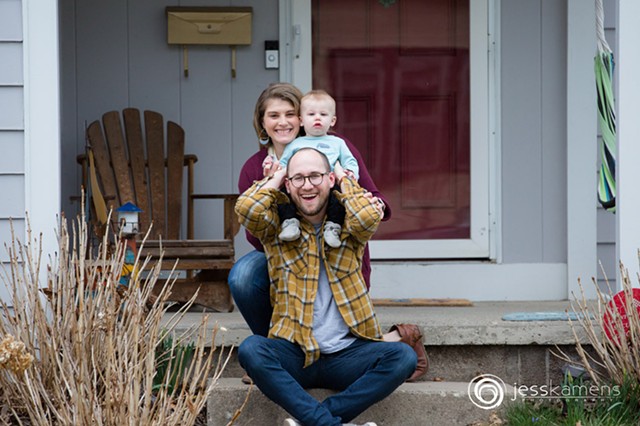 Zatkowsky, an art teacher and Kamens’s next-door neighbor, was drawn to the way the project highlights the indispensability of family. Zatkowsky says the experience still felt like a family portrait in an authentic professional context, albeit more raw and without the ability to perfect the aesthetics of the photograph.
Zatkowsky, an art teacher and Kamens’s next-door neighbor, was drawn to the way the project highlights the indispensability of family. Zatkowsky says the experience still felt like a family portrait in an authentic professional context, albeit more raw and without the ability to perfect the aesthetics of the photograph.
As for the portraits’ importance as vehicles for posterity, Zatkowsky points out that in times of tragedy and struggle, art has been a vital means of documentation. “Some of that artwork, in a sense, is famous because of when it was done, more than because of what it is,” she says. “It’s famous because of the experiences that it’s representing and the time that it’s representing. And again, that hope that it’s a once-in-a-lifetime experience, and that someone took the time and turned to art in that time, and whether that art was healing for them or for others or for both, the art was monumentally important, and much of it survived.”
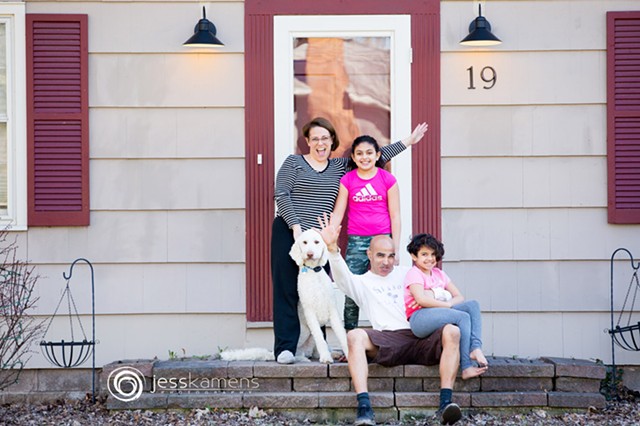 But that doesn’t mean there hasn’t been some backlash within the local photography community. Zatkowsky says that there have been dissenting opinions about the ethics of photographers continuing to work at a time when public safety is paramount, even though the portrait sessions are free and proper social distancing is implemented.
But that doesn’t mean there hasn’t been some backlash within the local photography community. Zatkowsky says that there have been dissenting opinions about the ethics of photographers continuing to work at a time when public safety is paramount, even though the portrait sessions are free and proper social distancing is implemented.
Zatkowsky also notes that another photographer had planned to visit her family for a similar project, and had even consulted a COVID-19 hotline to confirm that the project was safe to undertake. Ultimately that photographer decided to cancel such portraits out of sensitivity to those concerns in the community.
While Zatkowsky respects that decision, she feels that artists shouldn’t be shamed for finding clever ways to create while maintaining physical distance.
 “To not document this time, to some extent, would be shameful,” she says. “To not recognize that this is something that will go down in history, and photography and art have the power to capture that, would be kind of a disappointment to art and art’s history. Part of what art does is make you feel things and make you remember things and give you emotions to things. And if we don’t choose to make that connection, then what, as artists, are we doing with this time?”
“To not document this time, to some extent, would be shameful,” she says. “To not recognize that this is something that will go down in history, and photography and art have the power to capture that, would be kind of a disappointment to art and art’s history. Part of what art does is make you feel things and make you remember things and give you emotions to things. And if we don’t choose to make that connection, then what, as artists, are we doing with this time?”
It remains to be seen, years down the line, the extent to which such photographs of people in front of their houses during an international pandemic will have cultural resonance. At the very least, these snapshots in time may hold significance for current generations.
“It feels that our lives have changed forever in several ways,” Kamens says. “And so I do feel like parts of this are going to last forever. I’m hoping that people see the importance of connecting with one another and helping one another, and coming together and communicating a little bit more.”
Daniel J. Kushner is CITY’s music editor. He can be reached at [email protected].
When she arrives, she parks on the opposite side of the street and exits her car carrying a camera with a long lens. From her vantage point 30 feet or more away, she might call out to her subjects to squeeze together. But generally, she offers no specific direction on how to pose or what to wear. After two or three minutes of snapping away, Kamens is off to the next house.

- PHOTO BY JESS KAMENS
Like so many people whose work has been deemed “non-essential” by the state looking to quell the spread of the novel coronavirus, Kamens has had to improvise to make ends meet.
For her, gone are the days, at least for now, of shooting posed portraits and close-ups in a studio or other closed setting. Weddings are few and far between. The societal impact of the pandemic has not diminished her passion for her craft, but it has changed her approach to it.
Beyond the practical necessity of photographing someone from a safe distance as they appear on their porch, there’s a deeper thematic meaning in her art.

- PHOTO BY JESS KAMENS
- Local sign language interpreter Terri Reisinger and family
After one such session, Kamens’s daughter Lila said, “Do you know what I see about photography now?”
“What?” her mother asked.
“You make new friends,” she said.
“It was the sweetest perception, and she’s right,” Kamens says. “I feel like I’m connecting with my community like I never have.”

- PHOTO BY JESS KAMENS
- Local musician Seth Faergolzia and family

- PHOTO BY ABIGAIL CHOPEL
- Photographer Jess Kamens
The importance of preserving these images for future generations — for her grandchildren and great-grandchildren — is not lost on Kamens.
“What do people really wanna see?” she asks. “What will they want to see in 60 years when they look back at this situation, because this is an historic event, big time. And we know we’re living history right now. So what will they want to see? And they’re gonna want to see the faces, and they’re gonna want to feel the feelings of the people.”

- PHOTO BY ELI HACKETT
“Everybody kinda has this universal experience, just about, of an old film photo of their grandparents, just standing in front of their house,” Hackett says. “It’s nothing fancy, and it’s not very necessarily artistic; it’s not professionally done, usually.”

- PHOTO BY ELI HACKETT

- PHOTO BY ELI HACKETT
“I think the fact that I’m quite the amateur is actually gonna add to the character of it,” he says, “because like I said, I’m not trying to make it very artistic or doctored or staged.”
The photographs are taken for free and shot from at least 12 feet away. Hackett plans to send the developed portraits back to the subjects, with the date, names, and address written on the back. In the meantime, he shares digital versions of the photographs via Instagram (@eli.a.hackett).
Kamens’s “Quarantine Porch Portrait” series — which can be seen at jessrk.com/porch — started modestly enough last week, with just under 20 portraits taken in the first couple of days. But when Kamens put out an open call for participants online, the response became what she describes as a “wonderful overwhelm.” Within 24 hours of her post, she received 150 requests for portraits. That number has since grown to more than 375.
Though Kamens has visited clients in numerous locations in the Rochester area — from the city neighborhoods of South Wedge, Beechwood, and North Winton, to Brighton, Penfield, and Irondequoit — she didn’t have to venture far to photograph Danielle Zatkowsky and her family.

- PHOTO BY JESS KAMENS
- Local art teacher Danielle Zatkowsy and family
As for the portraits’ importance as vehicles for posterity, Zatkowsky points out that in times of tragedy and struggle, art has been a vital means of documentation. “Some of that artwork, in a sense, is famous because of when it was done, more than because of what it is,” she says. “It’s famous because of the experiences that it’s representing and the time that it’s representing. And again, that hope that it’s a once-in-a-lifetime experience, and that someone took the time and turned to art in that time, and whether that art was healing for them or for others or for both, the art was monumentally important, and much of it survived.”

- PHOTO BY JESS KAMENS
Zatkowsky also notes that another photographer had planned to visit her family for a similar project, and had even consulted a COVID-19 hotline to confirm that the project was safe to undertake. Ultimately that photographer decided to cancel such portraits out of sensitivity to those concerns in the community.
While Zatkowsky respects that decision, she feels that artists shouldn’t be shamed for finding clever ways to create while maintaining physical distance.

- PHOTO BY ELI HACKETT
It remains to be seen, years down the line, the extent to which such photographs of people in front of their houses during an international pandemic will have cultural resonance. At the very least, these snapshots in time may hold significance for current generations.
“It feels that our lives have changed forever in several ways,” Kamens says. “And so I do feel like parts of this are going to last forever. I’m hoping that people see the importance of connecting with one another and helping one another, and coming together and communicating a little bit more.”
Daniel J. Kushner is CITY’s music editor. He can be reached at [email protected].
